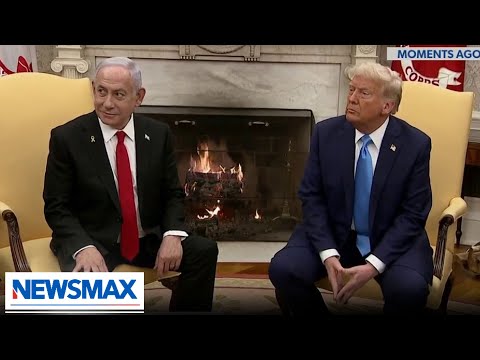Recently, there has been significant attention surrounding a crucial meeting in Washington, D.C. between former President Donald Trump and Israeli Prime Minister Benjamin Netanyahu. This marked their first face-to-face encounter during Trump’s second term, adding extra weight to the discussions at hand. The focus of their conversation revolved around ongoing conflicts in the Middle East, particularly concerning hostages held by Hamas and the wider implications of U.S.-Israeli relations. Without a doubt, both leaders are eager to tackle the complex issues at play.
The backdrop of their meeting was particularly urgent; tensions in the region have escalated following tragic events, including the conflict that erupted on October 7. During this difficult time, many people have been affected by loss and suffering, and both Trump and Netanyahu expressed their commitment to resolving the ongoing hostage crisis. They pointed out that, under their leadership, numerous hostages have been successfully reunited with their families through several negotiation deals. The gravity of these discussions, layered with a sense of urgency, made for a captivating watch for many viewers.
Beyond addressing the immediate crisis, the leaders also delved into broader strategic discussions, particularly concerning the hostile relationship with Iran. As Trump expressed, the threat posed by Iran’s nuclear ambitions cannot be ignored, and military action must remain a potential strategy for addressing this ongoing concern. The former president underscored the deteriorating state of affairs compared to when he was in office when he claimed that geopolitical challenges appeared far less daunting. The session gave onlookers a glimpse into how both leaders perceive current and future threats in the region.
Interestingly, there was also discussion about the potential resettlement of Palestinians, especially those affected by the conflict in Gaza. Trump suggested that rather than returning to a dangerous and devastated Gaza, displaced individuals could be offered new opportunities in safer areas, sparking intrigue about where these discussions might lead. The idea proposed resonated with the hope for a peaceful solution that fosters safety and comfort for all parties involved, yet it also raised questions about the logistics of such a resettlement process and which countries would welcome new residents.
As the meeting concluded, both Trump and Netanyahu appeared optimistic about the cooperative future between the U.S. and Israel. The two leaders are committed to working together to strengthen their relationship and tackle the pressing issues before them. Despite the complexities of international politics, there remains a glimmer of hope for resolution. Viewers were left pondering what these discussions might mean for the future landscape of the Middle East and beyond, as both leaders emphasized the need for collaborative efforts to solve these longstanding challenges. Ultimately, whether through diplomacy or direct action, the question remains: can peace be achieved, or are there still too many fires to extinguish?



